A few weeks ago on my friend’s Substack comments I was involved in an interesting discussion about chi kung / qi gong and its benefits, including its suitability for certain observant religious people. I was away over Solstice and Christmas but I finally had a chance to edit, narrate and caption a simple introduction to the most basic of all our practices: ‘Raising Ch’i’.
Audio version
In gratitude for my paying subscribers, I will be posting a similar monthly video lesson here from February. I have chosen the upright format so that it is just as good to use on your phone as a laptop. My regular writing will still be free each week, but I wanted to give something of real value back to those of you who are making my writing, research, art and teaching possible. As my writing is largely about Tao and the embodied life, I thought what better thing than to share a part of that? This month, the video above is free to all subscribers. From next month it will go out to paid subscribers as an extra monthly post.
I will return to my usual area of subject matter next week, but I wanted to write a full, clear introduction here. If it’s not your thing, just hang on until next week.
Below I explain what chi kung is, what it most certainly is not, and give a few metaphors that might help contextualise ‘ch’i’ or ‘qi’ for people not familiar with the concept from Traditional Chinese Medicine, feng shui, meditation or martial arts. I also explain why my lineage still Romanises Chinese words using the Wade-Giles system rather than Pinyin, for example using ch’i rather than qi. Chi kung is suitable for all, even if you are seated or in a wheelchair, and I will write a few words about that too.
I am not a Taoist master, neither a master of T’ai Chi nor chi kung, I am just a teacher of more than 20 years experience, and I still study with my T’ai Chi Master in London. I have personally tested these exercises out on myself for over 35 years, and with students since 2002 and have found them profoundly beneficial to physical and mental health. I make no outlandish claims, but I am happy to say that everyone I have taught chi kung to felt better, not worse, after doing it. I hope that this post will help allay fears and lead to the possibility of more people from any cultural or religious background enjoying the health benefits that this gentle practice can give.
Whenever possible I steer clear of arcane terms or jargon, but some unfamiliar terms are to be expected with any new activity. Please get in touch via email or in the comments if you have any questions and I will do my best to answer them.
What is Ch’i?
Ch’i, chi or qi, is pronounced somewhat like ‘chee’ but slightly shorter, so more like the e in ‘be’ than the ee in ‘cheese’. You’ll find a thousand various definitions for it online, depending on the practice and experience of the writer. Although it is not a concept generally found in western thought lineages, it is congruent with many other philosophical frameworks, for instance the term ‘prana’ in Ayurveda and Indian yogic traditions. Both prana and ch’i tend to be translated as life force, breath energy, or vital energy. Ch’i is intrinsic to any living body, plant, landform, river, etc. Ch’i is also still the current ordinary word for ‘breath’.
Here’s a helpful simplified way of looking at it if it’s new to you: rather than seeing ch’i as an energy or substance, instead think of it as a way of describing many things that work together but are more easily described using one word. For instance, one can speak of ‘the mood of a nation’, even when there is no specific thing you could point at. Likewise, we are happy talking about a ‘spirited horse’ but couldn’t pin that down to any one aspect of its behaviour, gait or movement. Ch’i s not some thing you measure with a meter, it’s a qualitative notion based on many subtle observations of a living thing or system.
When you see a houseplant that is lacking water, hasn’t had enough light and has clearly been neglected, you will recognise the wilted leaves and dull tones of a living thing without what it needs for optimum vitality. We could describe this ‘deficient ch’i’. Conversely when you see a glossy-haired cat, with sparkling eyes, trotting lithely along a fence then leaping gracefully to the ground, only to curl up happily in the sun, you intuitively register the healthy vitality and liveliness of the creature. We could describe this cat as manifesting ‘abundant chi’. You might meet a neighbourhood child who seems unusually pale and listless, and knowing they were going through a very stressful or upsetting time at home, understand why they seemed to lack their usually vivacity, understanding that difficult emotions were draining their energy for life. Overworked people often describe themselves as ‘drained’, and this is no different to how we might describe their ch’i.
You can also see ch’i flow purely metaphorically: there is no need to ‘believe in’ any special energy at all to do T’ai Chi, chi kung or to benefit from acupuncture. Imagine going to see a dress rehearsal of a play where the actors are somehow not working well together, the play seems to stop and start and there is no flow to the performance. A good director will spot the deficiencies, bring all the elements together, inspire and unite the actors, give a stage direction here, change a line there, indeed do a thousand subtle things… But what we see as the result on the opening night is that everything flows and the play seems to be alive. Similarly, on a sports field, a game can be stagnant, choppy, even whole parts of the field can seem to be dead zones (all ways my acupuncturist might describe ch’i flow in the body). A good manager will give a great pep talk, maybe substitute a player, and make sure the team have water and energy drinks at half-time. Suddenly the previously sluggish team has been animated, and in its place is a dynamic, energetic entity, working together so they almost seem to be of one mind.
In both these cases, the director or the manager can be seen as like the mind, usually the heart-mind (hsin or xin in Chinese), although sometimes the mind-intent (Yi or I in Chinese) which gathers and directs the ch’i to increase the vitality of the whole system: whether that’s a person, a creature, an ecosystem or any other living thing. The mind that directs vitality or changes the flow of ch’i might be our own, or the beneficial intention or skill of an acupuncturist or TCM (Traditional Chinese Medicine) practitioner. It might also be the wider effects of time out in nature, spent in meditation, or in cultivating healthy habits.
What ch’i is not
Ch’i is not from ‘outside’, ‘demonic’, ‘extra-terrestrial’, or from any other alarming source. It is the observable natural vitality of anything that’s alive. Occasionally I have read scare-mongering photocopied leaflets in London, or heard about pastors or priests in other countries saying ch’i was bad, even ‘from the Devil’. These accusations are not based on reality, are plainly racist, and show no desire to understand Chinese medicine or culture.
Simply: in ourselves, if we are, say, having a panic attack and we are scatty, breathing rapidly and feeling unwell, we could just as easily say our ‘ch’i has risen to the chest and head’ (as well as it being disordered and uneven). Alternatively, when I have walked along the beach then done half an hour’s T’ai Chi, my mind is lovely and clear, and I feel settled in my centre of gravity, down in the belly, I could describe this as having ‘sunk my settled Ch’i to the tan t’ien’. I would like to reiterate that there is nothing unnatural or evil about ch’i. If it helps, think of ch’i as the physical sense of one’s natural vitality. This physical vitality comes from our mother and father at conception, literally from sperm and egg, genetics, from the circumstances of our gestation, from birth and infant nutrition and conditioning, from air, water and food quality, from a harmonious young life. In short, all the usual things that affect someone’s well-being, or lack of it, affect the ch’i too. Practises such as contemplation, pilgrimage, prayer, song and meaningful community work are also greatly beneficial to ch’i and the vitality which flows from good mental and physical health.
What practices like Taoist meditation, chi kung, T’ai Chi and traditional Chinese health methodologies try to do is strengthen, tone and balance ch’i with the express intent of physical benefit to the person. This makes us more available for our own lives and for our loved ones. There are many other subtle and excellent effects of advanced martial arts or meditation, but everything I will share on this Substack will be purely for the simple aim of your good health. I have spent half a lifetime sharing these things in person and online with probably a thousand people by now, so I am very happy to find a new way to share them with you.
Chi kung is literally ‘breath work’ or ‘life energy work’. As such, it covers certain physical exercises that stimulate breathing, circulation and healthy movement. There are numerous schools of thought around these movements with their own associated philosophies. Some movements take inspiration from birds or animals, others from natural cycles or water. I will make the videos clear and concise so that they are easy to follow. What makes chi kung effective is your own regular personal practice. I’ll talk more about intention, sensations, effects, and practice details in future videos.
Spelling and Romanisation of terms
Most people these days use Pinyin Romanisations of Chinese words, there are many good reasons for that. In my tradition we don’t, out of respect for our lineage masters who fought on the opposing side to the Communists, escaped to Taiwan, and do not use the same descriptions, spellings or standardised formulae as much of what went on to become the approved ‘Beijing Style’. Indeed, T’ai Chi was banned during the Cultural Revolution and was only reinstated in mainland China after 1974, long after the brutal forced ‘re-education’ of many masters, alongside the persecution of Taoist, Buddhist, Christian, Orthodox and Muslim people. I won’t bore you with the details here, but I wanted you to know that there is a good reason why I don’t use standard spelling, but use the older T’ai Chi rather than modern taiji here, which has nothing to do with ‘coloniality’ at all. My Great Grand Master, Dr Chi Chiang Tao, was both a Taoist and Christian, a supreme yielder who taught men and women of any race, as did his teacher Prof Cheng Man-Ch’ing, a Confucian. It is in this open spirit and in ongoing gratitude to those who spent their lives passing on the art that I hope to share some simple things with you.
Seated practice or wheelchair users
You can practice all these exercises in a chair and I have taught seated chi kung for decades. Sit a little forward in a chair if possible with the feet flat on the ground. Instead of melting just the feet into the ground, also melt the sitting bones into the chair. Then just follow the movements and instructions as closely as possible with the arms and upper body. These movements can even be done ‘in the mind’s eye’ using the creative imagination. When I was laid up in bed after emergency surgery on my spine many years ago, I practiced with sincere intent but only tiny movements until I could get out of bed and do ‘Raising Ch’i’ (which I am sharing with you in today’s video). That was the beginning of my walk back to health, after almost becoming paralysed from the waist down, after not having practiced T’ai Chi and chi kung for a decade. I have not made that mistake again.
Nothing special
You don’t need a mat or any special clothes or shoes to do the ch’i kung that I’ll be sharing. Wear loose comfortable clothing, soft shoes, slippers or thick socks if indoors. Going barefoot is not traditional for this art but as long as there is no cold, wind or damp, you can be barefoot if you really prefer it! A well-ventilated space or a nice day outside are ideal. My absolute favourite spot is on the beach in Bournemouth, looking out to the horizon. I just wear my usual baggy clothes and a light pair of flat flexible ‘barefoot shoes’. But I have done my practice in hiking boots up a mountain, or in wetsuit shoes in the dunes, as well as in my pyjamas in the living room. All good.
Today’s clip of Raising Ch’i was filmed last month. I have added captions and a voiceover so it is usable by more people. It was taught to me by Kajedo Wanderer in 1987 or 1988 at Newbold House, then part of the Findhorn Foundation. Kajedo’s teachers were Petra and Toyo Kobayashi, authors of this excellent book, and students of Dr Chi Chiang Tao, who was also my current teacher’s Grandmaster. Kajedo taught beautiful, simple T’ai Chi and chi kung and we are still friends 35 years later. So that’s it, my friends, give it a go, see how it feels. If you think it’s not for you, that’s ok too. In my tradition, we never try to force our arts on anyone. I was lucky, I came across the Tao when I was 13, T’ai Chi when I was 15 and I really got going when I was 28. So, a fairly sincere beginner, by now at 50…
Warmest wishes from Devon, where I am staying with a friend for a couple of weeks working on leather, tanning, sewing and craft, lending a hand with her DIY projects, and helping her make a woven willow boat that will be covered with hides and get paddled down the Thames this summer.
This week’s good thing: The work of Joumana Medlej. I love her art and writing, she describes herself as someone ‘who is finding her way through forgotten art practices and natural ways’. Her Substack is thoughtful and full of beauty and her excellent books on wild inks and paints, and traditional paints of the Middle East, are on my studio shelves. You can also see lots of her visual work, art and calligraphy on her Instagram. A scholar of ancient texts as well as an artist / maker, Joumana’s work straddles art, lettering, chemistry. antiquities, architectural study and faith. It is well worth taking some time out to look into her online offerings.


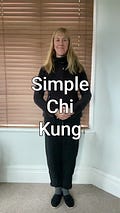

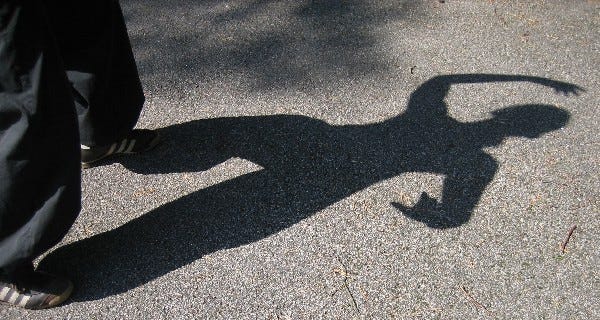

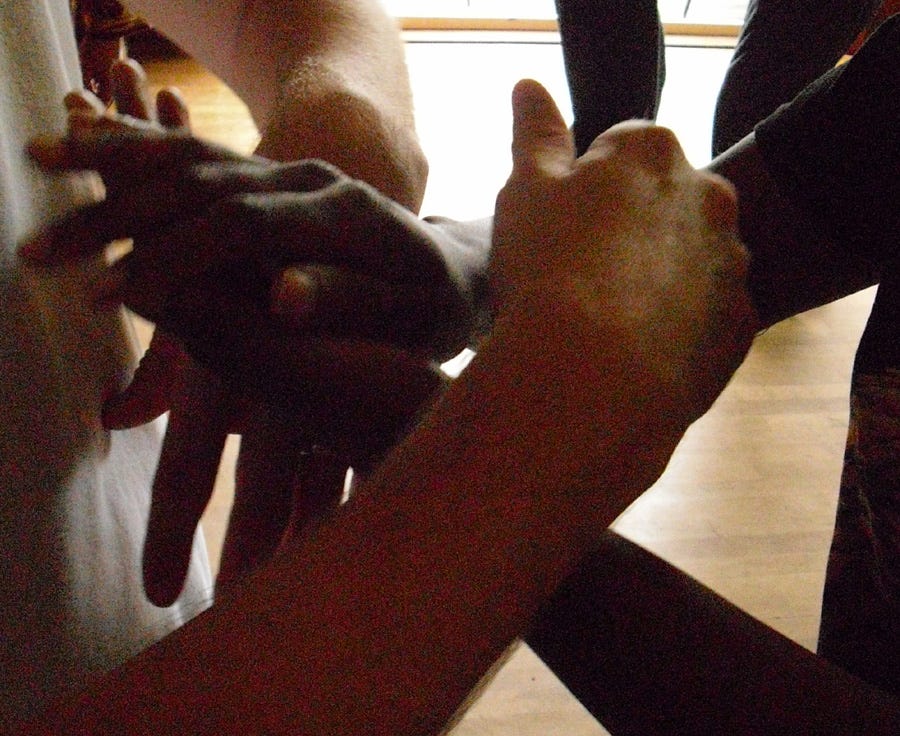
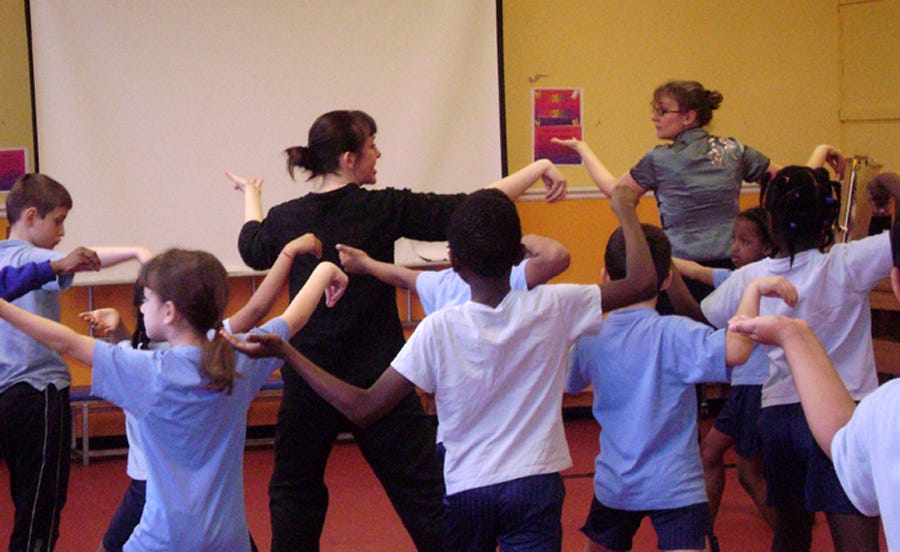
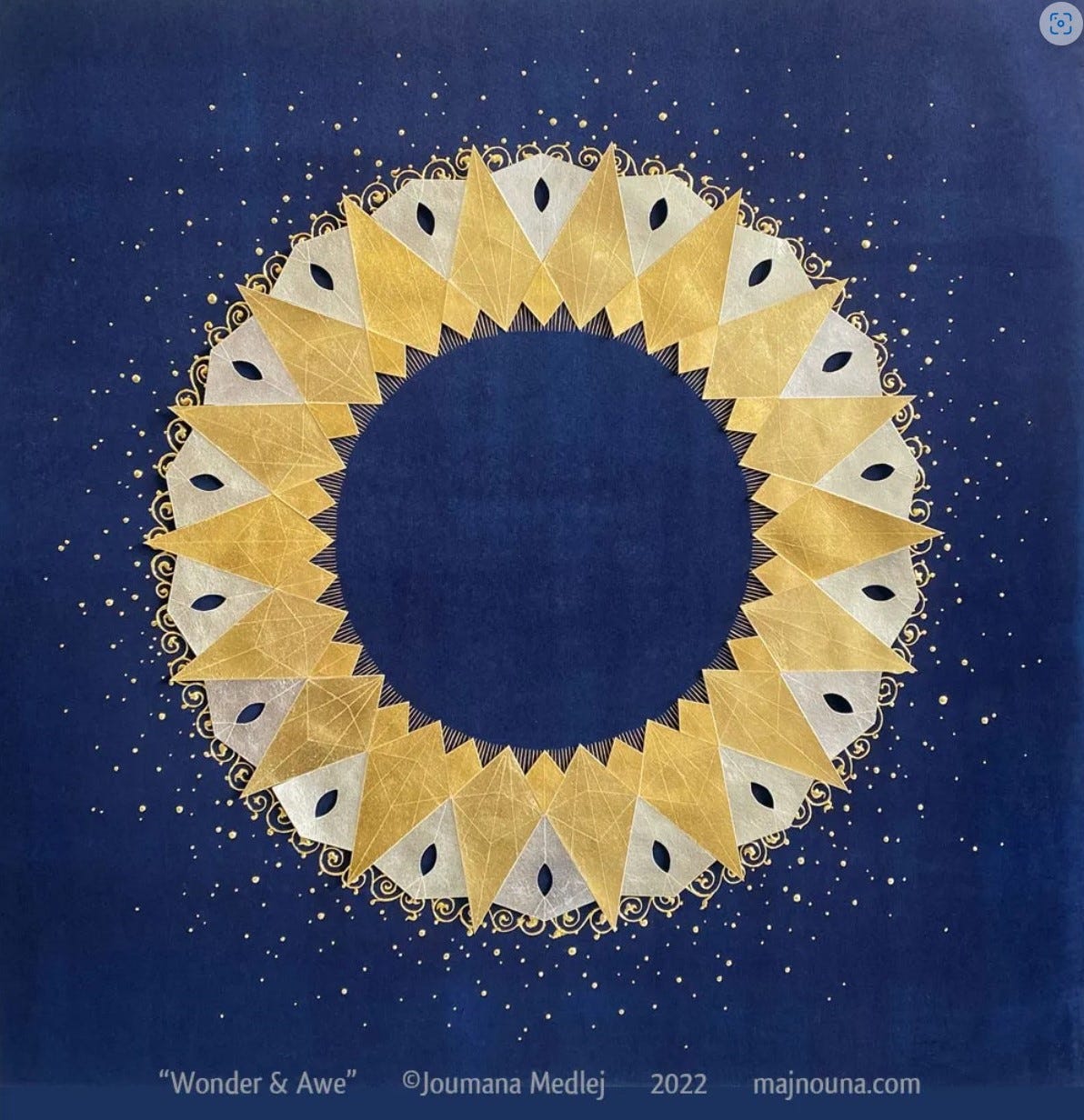


Return to movement